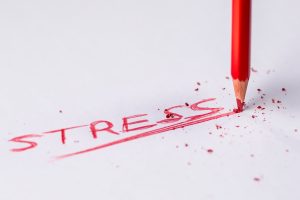Analyze the Assignment Guidelines: Break Down What is Required
When attempting any task, especially in the field of academia, it’s essential that you understand the specific requirements of the task before beginning. The TOK Exhibition is no different; the more you know about what’s expected of you, the better your end result will be. That’s why it’s important to analyze and break down the assignment guidelines to get a better understanding of what is required.
To begin, you need to understand precisely how much you are expected to write. For the TOK Exhibition, the prescribed word count is between 1200 and 1500 words. This should act as a guide for how long your exhibition should be, and it’s important not to exceed this limit. It may also be useful to break down the word count into smaller, manageable chunks. For example, set aside 300 words for each of your paragraphs.
You should also pay attention to any other instructions given in the assignment guidelines. For example, the guidelines might state that the exhibition should focus on three are of knowledge, or present six sources of evidence related to your argument. Be sure to include all of these instructions in your analysis so that you can plan your exhibition accordingly.
Finally, take close look at the criteria used to mark your work. Many assessments will feature criteria such as ‘depth of analysis’, ‘structural organization’ and ‘quality of written communication’. Understanding these criteria will help you determine exactly what qualities should be present in your exhibition to make it successful.
By analyzing the assignment guidelines, breaking them down, and understanding the expectations, you’ll be able to craft a well-written TOK exhibition. By taking the time to understand what is required from the start, you can save yourself time and energy in the long run.
Writing a successful IB TOK exhibition requires clear connections between your objects and the knowledge question — this article explains exactly how to achieve that.
Research Strategies for Finding and Understanding Relevant Sources
In the International Baccalaureate Theory of Knowledge (TOK) exhibition, you will need to research sources on a given topic to support your ideas and make an argument. With a limited word count, it is essential that you find sources with relevant information and learn how to extract the only information you need. Here are some research strategies that can help you gather and understand relevant sources.
Begin with Background Research
It’s important to start your research with an understanding of the concepts related to your topic. This can include understanding the historical context of your exhibition topic, the theories that explain it and the institutional framework associated with it. This will help you get a basic understanding of the content area and develop relevant keywords for your search.
Make Use of Library Databases
Academic databases such as JSTOR, Google Scholar and ProQuest provide access to a wide range of academic literature on various topics. Most university libraries offer access to these resources, which can be a great source for finding books, journal articles, media reports and other sources.
Search for Online Resources
The internet is a great resource for finding relevant sources, with many websites offering information on various topics. It’s important to evaluate the credibility of online sources before relying on any finding, as anyone can write anything online. Be sure to look for credible sources, such as websites belonging to established organizations or news media.
Look for Primary Sources
Primary sources can provide insights into a topic that cannot be found in secondary sources. These sources can include official documents, letters, journals, and speeches, among others. They can provide invaluable information and help you form more rounded opinions.
Reflect on the Content
After finding the relevant sources, it’s important to read them critically and reflect on the content. Try to look beyond the text and identify any underlying messages or implications. This can help you gain a richer understanding of the concept and come up with creative and insightful arguments within the word count limit.
Brainstorming Techniques for Developing Ideas (250 words)
When it comes to brainstorming ideas for a TOK Exhibition, it’s important that you think creatively and come up with fresh ideas. Brainstorming is a way to generate a list of potential topics and avenues to explore that can help you narrow your focus. There are several different techniques you can use to do this.
One simple technique is to start by writing down any key concepts or questions that arise as you’re reading over the assignment prompt and information about the TOK Exhibition. From there, you can create a verbal or written map by jotting down ideas that come to you away from the prompt. This technique allows you to link related concepts together, creating a visual representation of how all the pieces fit together.
Another useful method of generating ideas is to create a concept tree. To do this, begin by writing down one main idea and create branches to represent related elements or subtopics. Concept trees are helpful in clarifying where your ideas are leading, and they often make it easier to identify connections between different concepts.
You can also use mindmapping as a way to brainstorm ideas. Similar to concept mapping, mindmapping starts with a central keyword or phrase that represents your main topic, and then branches off into related areas. You can add further layers of complexity to the map by adding additional keywords and ideas. Mindmapping allows you to see how different concepts fit together and how your thoughts are interconnected.
Finally, if you’re feeling overwhelmed or if you need to narrow down your focus, try using the 5-Why technique. This involves asking yourself ‘Why?’ five times in succession in order to uncover the root cause of your problem. This technique helps you to look beyond the surface level of your ideas and understand the deeper implications of your topic.
Using these brainstorming techniques can help you to identify interesting points of discussion, find connections between related topics, and formulate a clear thesis statement for your TOK Exhibition. Remember to write down your ideas as you go – even the ones that seem strange or unrelated – and keep an open mind while brainstorming.
Structuring Your Exhibition According to Word Count Limits
When it comes to TOK Exhibitions, word count limits can seem intimidating. Many students find themselves unsure of how to structure their exhibition within the confines of the specified word count. However, with careful planning and consideration of the various components to include, you can create a successful TOK Exhibition that meets the word count limit.
The first step of planning the structure of your exhibition is to determine how many words you are allowed to use. Make sure that you understand how long an introduction, main body and conclusion should be, as well as how many words each section should contain. Once you have identified how many words you are allowed to use, you can begin to plan how to divide them.
Think about what you want to include in each section. Usually, an introduction should be short and concise, providing an overview of the topic and arguments. The main body should contain more detailed information and evidence to support your arguments. The conclusion should be a summary of the points made, and should not introduce any new arguments.
You can also consider dividing your exhibition into subsections. This will allow you to cover more content, while ensuring that each point is clear and concise. Additionally, consider how much detail to include in each section. Make sure that any evidence included is relevant and that it supports the argument.
Finally, if you are struggling to stick to the word count limit, you may want to consider removing unnecessary information, such as definitions and quotes. This will help you to whittle down your essay and create a successful TOK Exhibition that meets the word count limit.
Thinking Critically: Devising a Convincing Argument
When writing an Exhibition for Theory of Knowledge (TOK), the main focus is on devising a convincing argument. You need to be able to identify the strengths and weaknesses of different perspectives in order to make an effective argument. It’s important to think critically about the topic and come up with well-reasoned conclusions.
A convincing argument should be backed up by evidence, which you will need to research. Use reliable sources to find supporting information, such as primary sources, peer-reviewed articles, and experts in the field. It’s also important to consider different perspectives and analyze how they support or weaken your argument.
When constructing your argument, it’s important to take into account the word count limit of 450 words. This includes all text, such as titles, subtitles, and cited sources. Every word you include must be necessary and contribute to the overall argument, so avoid superfluous details or repetition. Focus on presenting your idea efficiently and effectively.
Organize your argument in a logical way, beginning with an introduction that clearly states your position. Then present evidence to support your views and draw conclusion from them. Finally, wrap it up with a clear conclusion that supports your original argument.
In addition to being organized and concise, a convincing argument should also be well-referenced. Include factual sources and give proper credit where due. Use the correct formatting style for citations, such as the Harvard or APA styles.
To sum up, a convincing argument for an Exhibition for Theory of Knowledge should be well-structured, concise, and properly referenced. Make sure to research and include evidence to support your views and draw conclusion from them. Don’t forget to take into account the word count limit and use the correct referencing style.
Examples of Good Exhibitions that Exceed Word Limits
Creating an exhibition that exceeds the word limit is a great way to show off your in-depth knowledge and understanding of a given subject. It also shows that you are prepared to go the extra mile and spend more time on your work. To get an idea of what an exhibition can look like that exceeds the set word limit, here are some examples:
- An exploration into the economic impacts of climate change, which includes research into current policy, trend analysis and interviews with experts.
- A study into the social media habits of young people, bolstered by interviews, surveys, and real-time analytical data.
- A comparison of different international political systems, supported by expert opinion, case studies, and an explanation of relevant theories.
- An exploration into the development of new technologies, backed up with examples of their applications, pros and cons, and future prospects.
In each of these examples, the exhibition goes beyond the prescribed word limit by providing in-depth analysis and a wealth of evidence.
Need TOK Essay Help?
IBStudentHelp offer expert TOK essay writing services to our clients from all over the globe 😉
Keep in mind that while it’s important to meet word count requirements, it can be equally as beneficial to provide more information or evidence if you can. The most important point to remember when producing an exhibit is that quality is the key – the content should be concise and accurate.
When it comes to writing effective text for a TOK Exhibition, finding the right balance between sophistication and simplicity is key. After all, the purpose of the exhibition is not to show off how much you know – it’s to accurately convey complex topics in a way that can be understood by a wide range of audiences.
In order to craft the perfect text for your TOK Exhibition, here are some tips to keep in mind:
• Use language that is easy to understand. Keep length and complexity of words to a minimum – readers won’t appreciate having to decipher large chunks of text.
• Write with clarity. Each point should be neatly structured and logically sequenced. Remember that your goal is to explain difficult concepts in a simple manner.
• Avoid jargon. While technical terms may seem impressive, using them incorrectly or too frequently will hinder your message and may make your exhibition sound contrived.
• Choose your words carefully. Replace words like “interesting” with more specific ones – this will strengthen and differentiate your argument.
• Incorporate evidence. Make sure to include quotes and references from reliable sources to back up your stance.
• Tell a story. By weaving a narrative into your creative writing, you can bring your ideas to life and make them more engaging.
• Let your voice shine through. Show your reader who you are – write conversationally and use humor and wit in moderation.
Finally, take your time with the writing process. Crafting the perfect text is essential – don’t rush it. Proofread, edit, and revise before submitting.
By keeping these writing tips in mind, you should be able to craft the perfect text for your TOK Exhibition. Use clear and understandable language without sacrificing sophistication and accuracy. Embrace your creativity and share your own ideas and interpretations – this will help to make your exhibition stand out from the rest.
Presentation Tips: How to Make Your Exhibition Engaging
TOK Exhibitions are the perfect way to showcase your knowledge and understanding of the Theory of Knowledge. As part of the assessment criteria, it is essential that your exhibition is engaging, informative and well-presented. Here are some tips to ensure you make the most of your exhibition.
Visual Appeal
The way you present your exhibition will be a key factor in its success or failure. Consider using visual aids to spice up a boring presentation, such as infographics, diagrams or images. This will help keep your audience engaged and make the content more interesting. Additionally, try to use a variety of presentation tools such as slides, posters, and videos.
Communicate Your Ideas Clearly
Your exhibition should be clear and easy to understand. Use straightforward language and avoid jargon. Make sure to explain difficult concepts in detail and break longer pieces of text into shorter paragraphs. Additionally, make sure to include any relevant graphs, tables or other data visualisations to effectively communicate your message.
Emphasize Your Points
Make sure to emphasize the main points of your presentation. Use bold fonts or highlight important words or phrases. Use anecdotes or personal stories to give life to any dull topics. You can also use humour or visual illustrations to better explain your ideas.
Practice
Practice your presentation before the actual day. Ensure that you speak clearly and at an appropriate volume. Have someone else test it and give constructive feedback. Finally, make sure to end your presentation on a strong note by summarizing your main points.
With these tips in mind, your TOK Exhibition should be engaging and informative. Remember to follow the word count limits and stick to the instructions. With proper planning, research and practice, you should be able to make a successful presentation.
Referencing and Formatting Your TOK Exhibition
Having researched your topic thoroughly, you must now make sure that that the sources you have used are correctly referenced and formatted. Accurate referencing is essential – it not only shows that you have done thorough research and read widely, but also helps to verify your points and validate your arguments.
The International Baccalaureate (IB) has a specific system of referencing for TOK Exhibitions. To format your essay correctly, you will need to follow the guidelines given by your individual school or institution. Generally, references should be in the Harvard or Oxford styles, which follow an Author-Date format. In this system, the author’s last name is followed by the year of publication in brackets.
For example, in an in-text reference, the sentence will look something like this:
“According to Smith (2003),”
At the end of your essay, you must provide a list of all the works cited in your paper. This should include full bibliographic information as required by your institution’s referencing style guide, such as author name, title of book, place of publication and publisher.
Finally, remember to proofread your essay carefully before submitting it. Check for spelling and grammar mistakes, incorrect references, and formatting errors. It’s also important to make sure that your essay is tailored to meet the word count guidelines. Good luck!
Proofreading and Editing
Proofreading and editing are two essential steps when writing an exhibition. These can make the difference between a stellar paper and a mediocre one. Here’s how to get it right:
Read Your Work Out Loud
Reading your work out loud forces you to identify any mistakes more easily. It’s often easier to spot errors when you hear them instead of just reading them. Make sure to read through your work several times.
Check for Spelling and Grammar Mistakes
When proofreading, be sure to double-check for misspellings and grammar mistakes. If you’re not sure if something is correct, use a reliable online grammar checker.
Pay Attention to Word Choice
Word choice is important when writing. Make sure the words you use are appropriate and accurate. Think about how each word or phrase will sound to the reader. Be sure to replace generic words with more interesting ones that accurately reflect your ideas.
Read Your Work in Reverse
Start by reading the last sentence of your essay and move through the sentences in reverse order. This helps you spot any inconsistencies with your ideas or plot points.
Check Facts and Cite Sources
When you cite a source, be sure to check that it’s accurate and up-to-date. Make sure to include quotes and examples from credible sources. Finally, double-check that all of your facts are accurate.
Ask Someone to Proofread
Finally, ask someone else to proofread your work. A fresh set of eyes can help spot mistakes and offer feedback on creating a better essay.
Proofreading and editing are key steps when writing an exhibition. By following these tips, you’ll have a better chance of creating a successful and convincing text.
Conclusion: Review of What You’ve Learned
Hopefully you’ve gained a better insight into how to write and prepare for a TOK Exhibition that meets the specified word count. You’ll now have a good understanding of how to begin preparing for your exhibition and how to structure it in an effective manner.
You should now feel more confident about finding the relevant evidence and writing your exhibition. Through researching, brainstorming, and structuring your work, you can make sure that you present the best possible version of your exhibition. You will also understand the importance of proofreading and formatting before submitting.
- Analyzing the assignment guidelines gives you insight into what your teacher is looking for
- Research strategies help you find and evaluate sources
- Creative brainstorming techniques are useful for developing strong ideas
- Organizing effectively according to word count limits allows you to present a coherent argument
- Applying critical thinking and providing examples will strengthen your exhibit
- Writing and preparing for the presentation ensures successful delivery
- Proofreading and editing are essential for submitting a quality product
By understanding how to utilize all of the above when preparing for your TOK Exhibition you can confidently complete the assignment and be proud of the work you produce.








